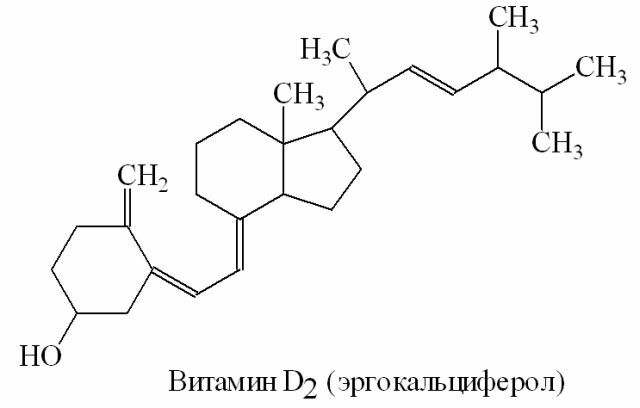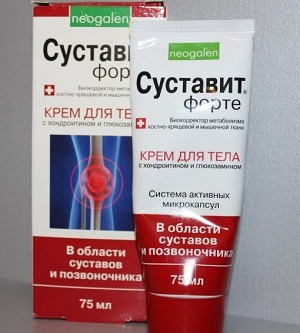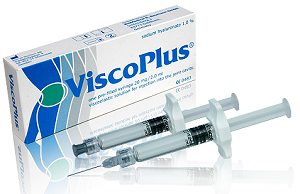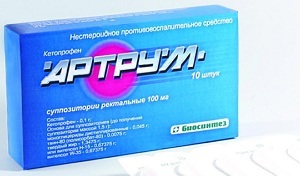 This medication is classified as a non-steroidal anti-inflammatory drug.
This medication is classified as a non-steroidal anti-inflammatory drug.
Has anti-edematous, analgesic and antipyretic effect. The active ingredient is ketoprofen.
Artrum is available in the form of gel, candles, tablets and in ampoules.
The content of the article
- The action of the drug
- What happens when the drug hits the body
- When is the drug particularly effective
- Contraindications
- Mechanism of Action
- How to use the
- tool Choose the dosage
- Overdose cases
- What else should I know
- Drug Interactions
- Doctors Reveal The Truthabout the drug
- Patient Reviews
- Pros and Cons of the Facility
- Purchase and Storage
Pharmacological Actions
drug is a derivative of propionic acid. The action is aimed at reducing inflammation and reducing the painful syndrome.
The active component inhibits the activity of cyclooxygenase( COX-1 and COX-2), which regulates the synthesis of prostaglandins.
The analgesic effect is due to central and peripheral mechanisms. Has anti-bradykinin action, stabilizes lysosomal membranes.
What happens if the product enters the body
If the product is applied topically, the active ingredient is absorbed slowly. A dose of 150 mg will provide the highest concentration in the blood after 8 hours( 0.15 μg / ml).
The drug does not possess a cumulative ability, i.e., does not accumulate in the body. The bioavailability of the drug is not more than 5%.
For oral and rectal administration, the active ingredient is absorbed into the gastrointestinal tract. The maximum concentration is achieved after 3-5 hours( depending on the form of the drug).
Because of its high lipophilicity( affinity for fats), it quickly penetrates the barrier between the blood and the neural tissue. Concentration in the cerebrospinal fluid will persist until 18 hours.
Ketoprofen penetrates well into the synovia( articular fluid).The drug is excreted mainly by the kidneys and to a lesser extent through the gastrointestinal tract.
In which cases is the drug particularly effective
Indications for the use of Artrum are as follows:
- rheumatoid arthritis( chronic inflammation of the joints);
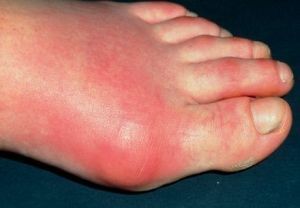
- Bechterew's disease( inflammation of the intervertebral joints);
- gout;
- osteoarthrosis( degenerative-dystrophic changes in the cartilaginous tissue of the joints);
- muscle pain;
- neuralgia;
- tendonitis( inflammation of the tendon tissue);
- bursitis( inflammation of the joint bag);
- arthralgia( joint pain);
- radiculitis( inflammation of spine nerve root);
- postoperative pain;
- post-traumatic syndrome;
- dislocations, sprains, ligament rupture;
- menstrual pain.
What other drugs are used to treat arthritis and arthrosis:
Contraindications
Based on the instructions for use, contraindications differ for different forms of Artrum.
The use of Artrum gel is contraindicated in the following cases:
- hypersensitivity to the components of the agent;
- dandruff dermatitis;
- open wounds;
- infected abrasions;
- eczematous skin lesions.
Contraindications to oral administration:
- exacerbation of gastric ulcer;
- "aspirin triad"( intolerance to acetylsalicylic acid, polyps in the nose, bronchial asthma);
- severe liver and kidney disease;
- late pregnancy;
- increased susceptibility to the active substance;
- age is less than 15 years.
Contraindications to rectal administration:
- proctitis;
- bleeding from the rectum.
Mechanism of action
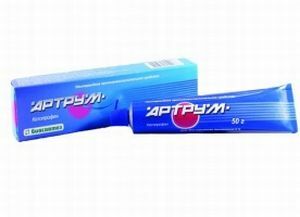 The action of the drug is due to the suspension of cyclooxygenase( COX-1 and COX-2) activity, which is why the metabolism of arachidonic acid is disrupted, and the permeability of the vessel walls is reduced.
The action of the drug is due to the suspension of cyclooxygenase( COX-1 and COX-2) activity, which is why the metabolism of arachidonic acid is disrupted, and the permeability of the vessel walls is reduced.
The drug inhibits the formation of histamines and prostaglandins, due to which the inflammatory process is suspended.
The analgesic effect of ketoprofen is due to the peripheral and central mechanism.
How to apply
The gel is applied to the affected area of the body two times a day.
Tablets are taken orally, the dosage is selected by the doctor depending on the severity of the disease.
Candles are injected rectally( the maximum permissible daily dose is 300 mg).
We select the dosage
Dosage is selected by the doctor based on the form and severity of the disease. 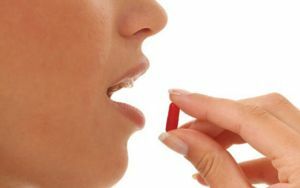
When given orally( tablets), the daily intake for adults is 300 mg, which must be divided into 2-3 divided doses.
In acute conditions or relief of exacerbation of a chronic disease, a single intravenous injection of 100 mg is indicated.
After this, the drug is used in the form of tablets or candles.
External application involves applying the gel to the affected area up to twice a day. The agent is applied in a thin layer and rubbed with massage movements.
Overdose Cases
In case of internal administration, the following side effects are possible on the part of various body systems:
- GI tract : abdominal pain, dyspeptic disorders( vomiting, nausea, diarrhea, heartburn), taste change, gastrointestinal ulceration, hemorrhoidal bleeding, hepatitis;
- CNS : headaches, dizziness, sleep disorders, depressive states, confused consciousness;
- of the senses : tinnitus, decreased vision, worsening of hearing;
- cardiovascular system : hypertension, heart palpitations;
- of the hematopoiesis : anemia, thrombocytopenia, leukopenia;
- urinary system : edema, cystitis, inflammation of the urethra, impaired renal function, nephritis, the presence of blood in the urine;
- respiratory system : rhinitis, laryngeal edema, blood from the nose, hemoptysis;
- skin reactions : rash, eczema, erythema, photodermatitis;
- allergic reactions : hives, itching, anaphylactic shock.
Signs of an overdose:
- weakness;
- nausea;
- abdominal pain;
- bleeding;
- disrupts liver and kidney function.
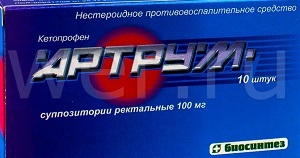 In case of an overdose, symptomatic treatment is performed( gastric lavage, reception of activated charcoal and other sorbents).There is no special antidote.
In case of an overdose, symptomatic treatment is performed( gastric lavage, reception of activated charcoal and other sorbents).There is no special antidote.
Local reactions are possible with candles and gel. In the first case, the mucous membrane of the rectum is irritated, the act of defecation proceeds painfully.
If you use a gel on your skin, you may experience a rash in the place of rubbing, itchy. Cases of overdose when using the gel are not described. For any negative manifestations, it is necessary to consult a specialist.
What else should I know
The drug should be used with extreme caution in patients with liver and kidney disease, history of gastrointestinal disease, dyspepsia, and after surgery.
Do not allow mucous membranes to come into contact with the gel.
In case of internal application, care must be taken when driving and practicing potentially dangerous activities, as the product reduces concentration and slows down the psychomotor reactions.
Tablets are contraindicated during pregnancy. The use of the gel is contraindicated in the third trimester of pregnancy.
In the first two trimesters, external application of the remedy is possible if the potential benefit to the woman exceeds the potential threat to the fetus. During breastfeeding, the drug should be discontinued.
Contraindicated at the age of 15 years.
Drug Interaction
Sharing with other non-steroidal anti-inflammatory drugs increases the risk of ulcerative gastrointestinal lesions and bleeding. 
When combined with drugs that reduce blood pressure, it is possible to weaken the action of the latter, with thrombolytics - an increased risk of bleeding.
Joint reception with aspirin reduces the binding of ketoprofen to plasma proteins, increases plasma clearance.
Combination with diuretics can disrupt liver function, as inhibiting the synthesis of prostaglandins reduces renal blood flow.
Doctors disclose the truth about the drug
Reviews of practicing doctors who prescribe to patients Artrum.
The drug works by analogy with other non-steroidal anti-inflammatory drugs. The active substance is ketoprofen.
The difference between drugs of this class is for the most part in price. The gel can be used without consulting a doctor for a short time, if the drug does not have the proper effect, a full-time specialist consultation is required, since pain can be a symptom of serious diseases.
Leonid P. Zvyagintsev
Patient Reviews
Apply Artrum gel after the first two visits to the rocking chair. There was no special effect, only a brief dulling of pain. After a few hours, the muscles began to ache as before. This gel did not help at all.
Serega
I bought this product when I suffered back pain after work at the dacha. By the evening, the waist was not sore, and a few days later nothing more worried. I will recommend the drug to friends.
Vasilisa
Artrum gel should be applied to undamaged skin areas by gentle massaging movements. It is better to start using the drug with a small dose to check the reaction of the body to the remedy.
Nikolay
Pros and cons of
The active ingredient of the drug is ketoprofen, which is a part of many analgesic gels and ointments( including Arthrum gel).With external application the product gives a quick effect. This is the main advantage of the drug.
The drug may cause adverse reactions in the villa to rashes and other skin and allergic reactions. This is the lack of medicine.
Purchase and storage of
The drug can be purchased in the form of gel, tablets, suppositories and solution. The price of Artrum is about 350 rubles.
Store in a dry, dry place at a temperature of up to 25 degrees. Shelf life - two years. The product is dispensed without a prescription. 
Available Artrum Analogues:
- Arketal Rompharm;
- Bystrumgel;
- Fastumgel.

